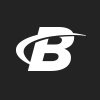No other exercise in the athlete's arsenal is as necessary as the squat.
A squat can be performed several ways with the weight placed in varying positions, such as the front of the body, overhead, the upper back, held at the side of the body (using dumbbells) and others.
The purpose of this article is to teach the reader the different type of stances used by strength athletes:

Squats - Power And Olympic

This week's article will discuss the differences; next week's article will discuss the "whys" along with a front comparison. Many answers will be provided as to why each squat is the way it is.
- The Power squat - used primarily by power lifters to lift maximum weights
And -
- The Olympic style squat - used primarily by Olympic lifters for greater mobility
Unless you are an Olympic lifter or a powerlifter, there is no need to get locked into one particular style. In fact, I believe even if you are a powerlifter, you can benefit from using the Olympic style occasionally to develop strength in ranges of motion that do not get used often in your sport.
If you are an Olympic lifter, you can benefit from using the power squat on occasion for greater emphasis on the posterior chain which is often the weak link in Olympic lifters and athletes in general.

 Benefits & Drawbacks:
Benefits & Drawbacks:

The Benefits Of The Olympic Squat Are:
- Greater range of motion
- More balanced loading between hip and knee joints
- Less loading on the lower back
The Drawbacks Of The Olympic Squat Are:
- Less weight can be lifted
- Less emphasis on the stronger muscles of the hamstrings
- More loading on the knees which can be prone to injury
The Benefits Of The Power Squat Are:
- More loading on the posterior chain
- Greater weights can be lifted
- More emphasis on the hip joints and less on the knees
The Drawbacks Of The Power Squat Are:
- Less mobility
- Reduced ability to be dynamic - in other words it is not a position you would want to catch a clean in.
Photo A:
Set up position -Power squat Left; Olympic squat right Picture on the left is the Power squat set up position. Bar is lower on the back and hips are already more flexed than the Olympic squat (right).
As you can see from the bottom position comparison, the Olympic squat allows a greater amount of knee bending. Shins are more vertical on the Power squat and hips drop back much more. Knees move more forward in the Olympic squat and hips drop much lower.
Photo C:
Hip angle comparison bottom position -- Power squat Left; Olympic squat right
Hip angle in the Power Squat (L) is much greater placing a lot more emphasis on the hips and posterior chain. The Olympic squat (R) has a lot less hip flexion at the bottom and trunk remains a lot more upright. This places the load more evenly between knees and hips.

Which Is Better?

- If you are a power lifter, then the power squat is best - at least in competition. However, that does not mean that you should not include the Olympic squat occasionally in your routine.
If you are an olympic lifter, then the Olympic squat is better most of the time, but occasionally the power squat is good to increase the strength of the posterior chain.
If you are an athlete in a different sport than power lifting or olympic lifting then doing both equally is fine for most athletes. Both provide benefits that can benefit almost any athlete.
